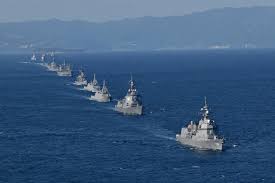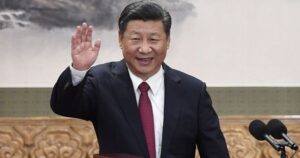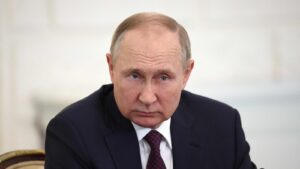
Blow For Beijing; India, Japan, US & Australia Take A Collective Stand To Counter China In The Indo-Pacific
Incontinently after the great International Fleet review that Japan hosted on November 6 at Sagami Bay, four quadrangle mates – Australia, India, Japan, and the United States – will commence the Malabar nonmilitary exercise off Yokosuka on Tuesday( November 8). This exercise will conclude on November 18.
The Navy chiefs of the four quadrangle countries met in Tokyo on November 5. They changed views on further enhancinginter-operability ” in unborn editions of the Malabar multinational nonmilitary exercise.The timing of both the IFR and Malabar exercise is significant, coming as they do in the wake of China’s adding aggressiveness in the Indo- Pacific and North Korea blasting record figures of dumdums.
Apropos, the IFR marked the 70th anniversary of Japan’s Maritime Self- Defense Force( MSDF) founding. Around 40 warships from 13 countries came together in Sagami Bay, off Tokyo.The nonmilitary cortege involved 38 vessels, 18 from friendly countries similar as the United States, South Korea, Britain, Australia, Singapore, India, and Thailand. Thirty- three aircraft flew above, including submarine- stalking command aeroplanesand copters. India’s two frontline warships, INS Shivalik and INS Kamorta were in this cortege .
Overseeing the cortege , Japanese Prime Minister Fumio Kishida said that Japan and like- inclined nations must be prepared for situations in which “ some countries champ on the peace and security of others through the use or trouble of force. ”In a speech aboard the MSDF copter carrier Izumo, Kishida reiterated Tokyo’s plans to “ unnaturally strengthen ” Japan’s defense capabilities within five times.
His assertion that “ unilateral attempts to change the status quo by force, similar as the recent irruption of Ukraine, must noway be permitted in any region of the world ” is also aimed at China, which is hanging to take over Taiwan Kishida forcefully and is staking territorial claims on the Japanese islets in the East China Sea.Still, it should be noted that the IFR, by its nature, is a emblematic and friendly gesture in which the host countries invite indeed the processions of the countries with which it has inimical relations.
In this environment, it was significant that China declined the Japanese assignation to shoot its vessels to the IFR. And inversely substantial was Japan’s pullout of its assignation to Russia for its irruption of Ukraine.It was clear that by hosting the IFR, Japan gestured that it’s forcefully committed to the vision of a Free and Open Indo- Pacific. Tokyo would like the transnational community to cement trust in its tone- Defense Forces as a visionary, dependable security mate, particularly in the maritime sphere, where the power balance appears to be shifting toward China’s advantage of late.
That explains why Japan now constantly sends MSDF vessels to analogous events overseas, dispatches forces for engagements under its Indo- Pacific Deployment operations, and is one of the biggest sympathizers of exercises hosted by associations similar as the Western Pacific Naval Symposium,ASEAN Regional Forum, and ASEAN Defense Ministers Meeting Plus.In discrepancy, still, the Malabar exercise is a proper military exercise. Over the coming ten days, it’ll see the four Quad processions in action. Reportedly, the exercise will witness “ high- tempo ” drills in multiple disciplines and complex face,sub-surface, and air operations, including live blasting drills.
piecemeal from the vessels( Shivalik and Kamotra), the Indian Navy is planting other nonmilitary means, including P- 8I long- range maritime surveillance andanti-submarine warfare aircraft, in this exercise.It may be noted that INS Shivalik is amulti-role guided bullet covert frigate, and INS Kamorta is ananti-submarine corvette. Both of them are indigenously produced, reflecting therefore the growing capability of India to make its warships. And both of them are part of the Indian Navy’s Eastern Fleet grounded at Visakhapatnam.
Apropos, this will be the 26th edition of the Malabar nonmilitary exercise. It started in 1992 as a bilateral drill between the Indian Navy and the US Navy in the Indian Ocean. Japan came a endless member of the exercise in 2015. And Australia joined in 2020. It’s an periodic war game taking place in colorful corridor of the Indo- Pacific.Unmistakably, the nonstop rise of the Chinese Navy( PLA Navy) in the Indo- Pacific binds all four countries in joining hands and bringing their fortified forces together to develop common strategies through military exercises. In the maritime sphere, it’s realized that they must act in accord collectively; it’s getting tough to catch up with China’s growing nonmilitary prowess.
According to the World Directory of Modern Military Warships( 2022), China now ranks second after the United States on the Global Naval Powers Ranking 2022( India ranks seventh). China also has the largest number of major face combatants of any cortege encyclopedically, with an overall battle force of roughly 350 face vessels and submarines. The rate of its periodic addition of nonmilitary vessels and frigates is the loftiest in the world.This policy of acting together by the Quad mates, all concerned over the growing ascendance of China in the Indo- Pacific, was also manifested last week, with India and Australia conducting a bilateral maritime exercise off the Indian seacoast of Visakhapatnam in the Bay of Bengal.
Australia’s flagship indigenous engagement exertion, Indo- Pacific Endeavour( IPE), arrived in Visakhapatnam on October 30. It comprised two vessels( HMAS Adelaide and Anzac), copters, and,500 labor force. The Indian contingent in the exercise included INS vessels Jalashwa and Kavaratti. The exercise concluded on November 5.Nominating India and Australia as the guardians of the sides of the Indian Ocean, visiting Australian Navy Fleet Commander Rear Admiral Jonathan Earley said that since the Indo- Pacific is marked by the ongoing “ big power muscle movement, ” it’s vital that India and Australia must train together to make trust and confidence while stressing on Maritime Domain Awareness( MDA) for the region.
He said good progress had been made on MDA and the exchange of information on the movement of military vessels in the region, a growing area of cooperation among the quadrangle countries. “ There’s an occasion for that to grow in further classified disciplines.That’s ongoing The enthusiasm and the provocation to partake more are clearly there, ” Earley added, adding that expanding surveillance in the P- 8I maritime command aircraft and India’s recent accession of MH- 60R copters make congruity.
He stressed how the quadrangle countries have several common military platforms, with India acquiring more and more military tackle from the US. “ The recent complementary exchange of P- 8 aircraft exercises between the two countries had gone “ exceptionally well, ” said the Australian Crewmate.Apropos, the Indo- Australian exercise was taking place during India’s alternate Naval Commanders ’ Conference in New Delhi( October 31 to November 3), which, among other challenges in the Indian Ocean region, is of vital concern to India, did concentrate on Chinese maritime conditioning.
Consequently, the Indian Navy is also growing. As Admiral Hari Kumar stressed during the Naval Commanders ’ conference, the Indian Navy has been strengthened by the recent commissioning of the alternate carrier INS Vikrant, acquiring of further bullet power, two ALH squadrons, and the launch of platforms like Surat, Udaygiri, Dunagiri, Nistar, Nipun, and Nirdeshak.He further refocused out that the demoiselle concurrent deployment of Indian Navy vessels across six mainlands on August 15 this time served as precious signaling to emphasize India’s credibility – at home, in the region, and worldwide.
In the last six months, functional deployments have also emphasized India’s credibility, with a footmark covering all major abysses of the world, he added.All this is said to be India’s signal that it’ll challenge China’s hegemonistic conditioning in the Indo- Pacific and the IOR in particular. And in this, India isn’t alone. India has solid support from Australia, Japan, and the United States in maintaining a rules- grounded order in the Indo- Pacific.

